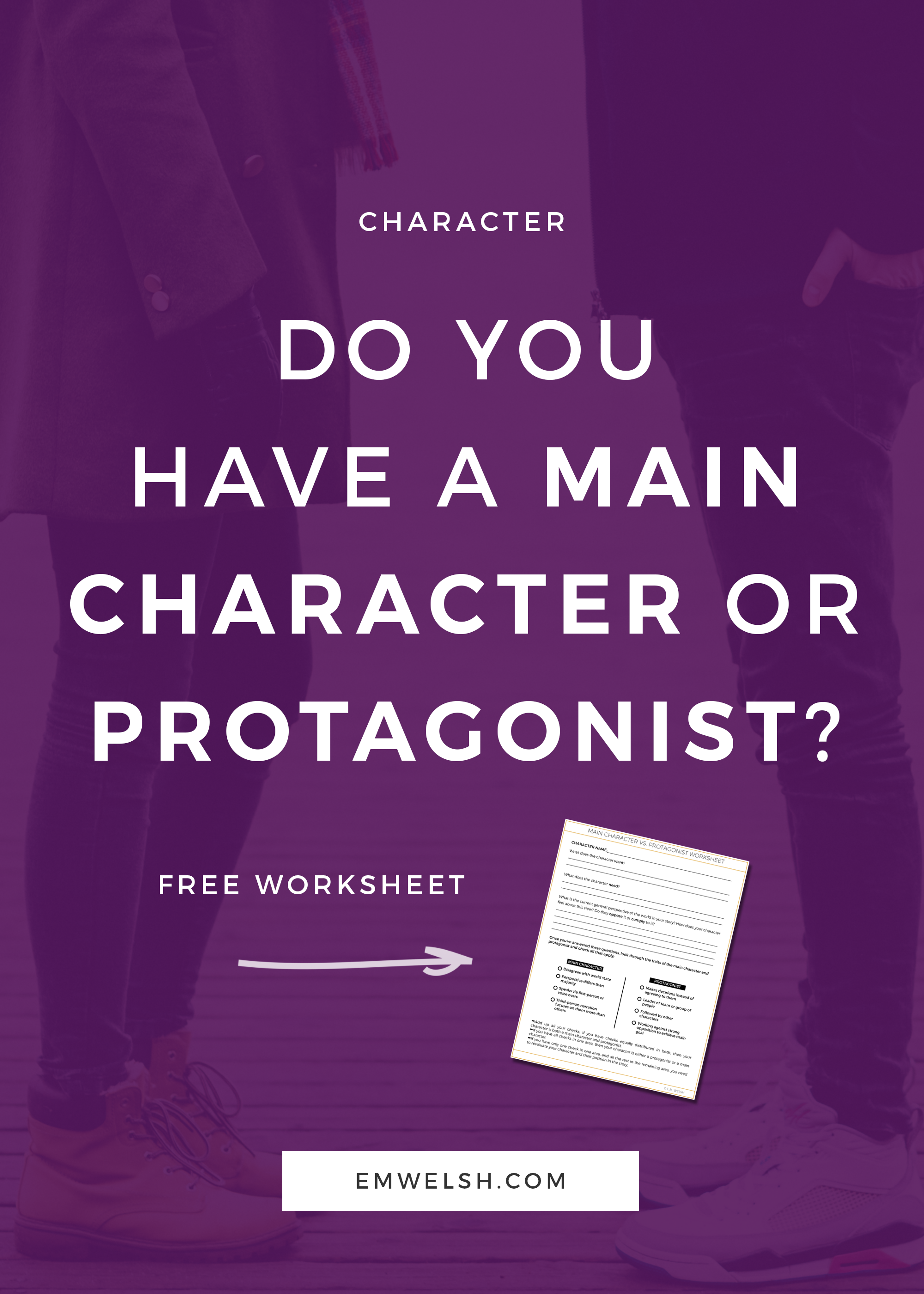Do You Have a Main Character or Protagonist?
/Oftentimes, the titles main character and protagonist are easily confused - and for good reason. Usually, both the main character and the protagonist are the same character, so that when discussing stories, we tend to use the terms interchangeably, and correctly so. But sometimes, the main character and the protagonist are not the same person. When this happens, the lines become blurred and people begin to misuse both terms.
According to the Dramatica definition, the main character is "player through whom the audience experiences the story first hand" and the protagonist is the "prime mover of the plot." In the screenwriting world, we usually consider the protagonist the person who drives the plot forward, makes the decisions, and creates action, though this can be applied to all storytelling forms. Speaking of, as a storyteller, it's important to know the difference between the two so that in future stories you know two things: whose perspective we are getting the story from and why, as well as who is driving the action forward. As mentioned, these never need to be the two same people, and by playing with that dynamic you can alter how your story is told. Take the most common example, The Great Gatsby. If Gatsby was both the main character and the protagonist, we as readers wouldn't get Nick Carraway's critical perspective on excessive riches and would therefore read the story entirely differently.
Given this differentiation, we can now explore what the protagonist and main character do for your stories. They both almost always exist in your pieces even if you write stories in which people have no goals and walk aimlessly about - so don't think you can escape this analysis. By better understanding how both character types work separately and together, you will be better able to track each types' arcs and individual stories to make a stronger narrative all together.
The Protagonist
The protagonist, in my opinion, is the easier one of the two to determine. Take for example any film that has a duo leading the narrative instead of a single person. While our instincts tell us that both characters are the protagonists, that is rarely the case. There is always a leader, and most likely that leader is the one who makes the decisions, takes action first, and is followed by the other character of the film. This is not to say the counterpart to the protagonist never makes a decision, but that in each scene the protagonist is usually the one driving the narrative forward.
The definition of a protagonist becomes even more important and perhaps easiest to comprehend when considering ensemble stories. Usually, the main character is not visible or even existent in ensemble pieces unless you have a voiceover narration or first-person perspective. However, with true ensemble movies like Little Miss Sunshine, where it is hard to say who is the main character, the protagonist becomes even more important. So with that in mind, let me ask those of you who have seen the film a question:
If you were to guess who is the protagonist of Little Miss Sunshine, who would you pick?
When I was first asked this question in my intro screenwriting course, I found myself really puzzled. "There is no protagonist. They are all the protagonists," I wrongly thought, confusing the main character for the protagonist. But after much discussion, we all agreed it was Greg, the father of the family. Once that was pointed out to me it seemed so obvious. Of course, Greg is the protagonist! He literally drives the story forward by driving the car. No one else gets behind the wheel, though a few try, leaving Greg to be the one pushing the entire narrative forward.
If you were to write a film where each character was leading the story and driving the action forward at different times, you would likely finish the first draft feeling like you'd created some disjointed mess without any sort of focus. Imagine if halfway through Little Miss Sunshine Olive jumped to the front seat and started driving the car. Feels pretty weird, huh? Or, if you haven't seen that film, think of something like Inception or The Royal Tenenbaums, where huge groups of people are involved in the main story. In Inception, it would feel really weird if suddenly Leonardo DiCaprio's character just decided he didn't want to lead the mission anymore, went home and handed it off to Ellen Page's character, right? Or if Royal in The Royal Tenenbaums never showed up at all? There wouldn't even be a story there!
The more you examine your favorite narrative pieces, the more apparent the protagonist will become to you - I promise! Once you understand what the protagonist's role is, you can better understand who the main character is and how they can be separate characters in a story. However, if you're still having trouble grasping these concepts by the end, don't worry!
Need more help? I've got the perfect worksheet to help you figure out who is who!
The Main Character
The main character is where things become tricky because sometimes completed works do not even have a main character or sometimes they have ten. To quote Dramatica once more, "This means that a book or a movie, a stage play or teleplay, may have no main character at all, or it may have many. But for any single story in that work, there will be only one main character."
You might argue that A Song of Ice and Fire does this with its many layered plots, to which I would point out that each chapter is from one character's perspective, making them the main character of that particular storyline and no one else. Stories can have various perspectives and sub-stories, yet no matter how hard you look, you'll find that there is never more than one main character per piece. What I mean by this is that every large novel has several stories within it - the main one and the sub ones, and that each one of those can only ever have one main character or absolute chaos would ensue. Can you imagine how difficult it would be to keep track of multiple main characters in one storyline? I can't because it actually seems impossible! We as readers can process multiple main characters so long as they each work individually.
Let's go back to Little Miss Sunshine. At first it seems difficult to decide who the main character is, especially because each character has their own sub-story in which they are the main character for that particular story or subplot. But when examining the film as a whole it becomes apparent that Steve Carell's character is the main one because he provides a new perspective on the family when he's introduced into the film. His viewpoint is the main one we get. Without him, we cannot question the state of the family to the same extent nor experience what it is like to become a part of the family.
But, where does the hero come in? Aren't all leads really the hero?
The shorter answer to this is there isn't always a hero. For a long time, I mistook the hero to be interchangeable for the main character, but that is not the case. According to Dramatica, a hero is essentially, "a combination of both [the] main character and [the] protagonist," bringing us to the Hero's Journey. Because of that, sometimes the hero in the more semantical sense does not always exist in every story.
However, when she does, she becomes an entity all her own - at least for the sake of simplicity for now. If you want to learn more, there are copious amounts of resource on the Hero's Journey, Joseph Campbell being a great one, so, for the time being, I will only define the hero as such without further explanation.
Why Does It Matter?
After all, these are just terms. You can easily write a protagonist and a main character separately without making a point to remember the technical names. However, the more you study the difference and ask yourself who is the protagonist and who is the main characters in your stories, the more you'll be able to play with these roles and tell new and exciting stories from perspectives you'd never have considered before.
So next time you watch a movie or read a book, ask yourself who is filling what role in the story and what purpose it serves. You'll find that over time and with practice, this question becomes easier to answer and therefore further ingrained into your writer's toolkit.
And we storytellers are always in need of more tools!


